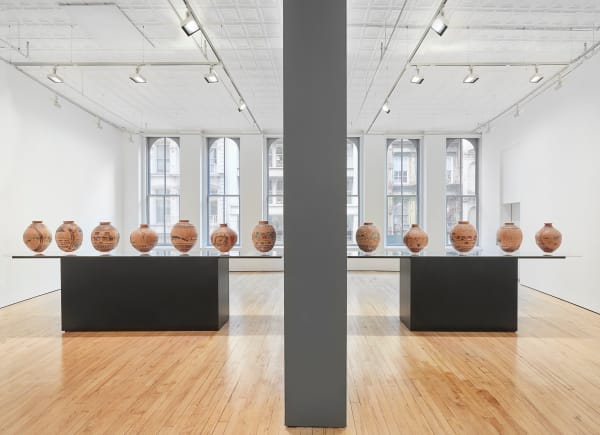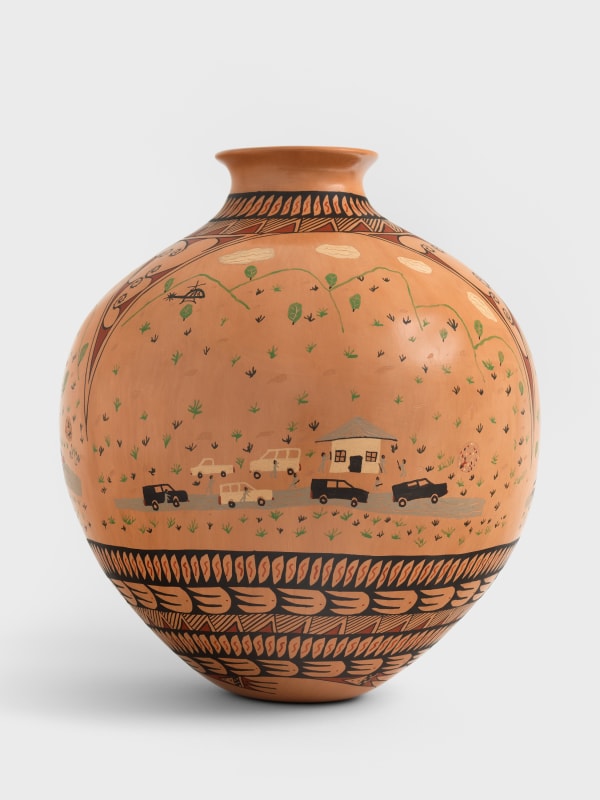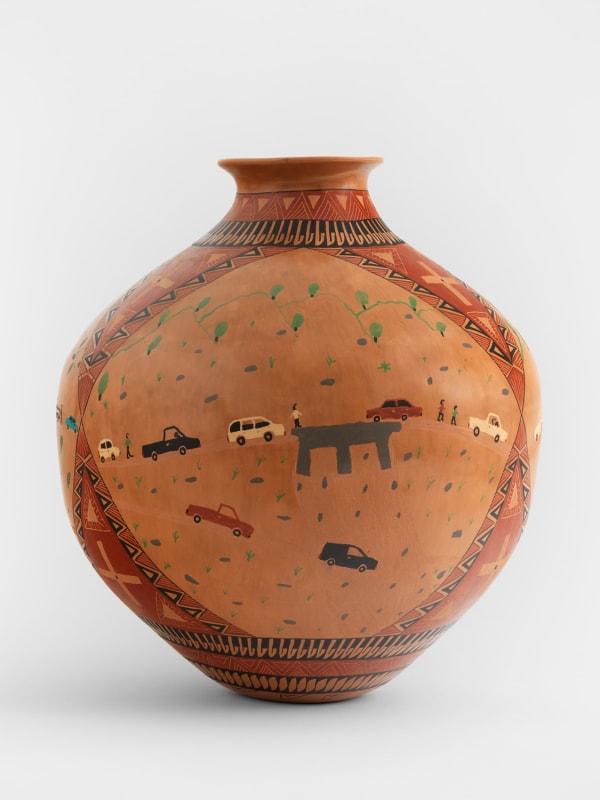-
-
In her ongoing investigation of the social and aesthetic dimensions of conflict, Teresa Margolles visualizes the enduring weight of violence. By infusing artwork with material traces of loss, she shares the stories of the disenfranchised in ways that are acutely visceral, confronting viewers physically and emotionally.
For this exhibition, the artist’s second solo exhibition at James Cohan, Margolles presents a series of painted ceramic vessels from her continued collaboration with artisans in the Northern Mexican state of Chihuahua, near the U.S./Mexico border. Located in the region near the prehistoric Paquimé archaeological zone or Casas Grandes (the place of the big houses) the ceramicists have suffered greatly from the escalating violence in the area.
-
-
This collaboration has resulted in Doce Crónicas—a visual yearbook of 12 painted vessels, one made each month over this past year—that visually recounts events affecting the population during this time.
-
-
These vignettes depict contemporary cars and houses amid the geometric fretwork traditionally used in pre-Columbian Paquimé pottery, like the winding desert snake. Upon looking closely, the quotidian is violently disrupted by illustrations of car crashes, explosions, and skulls-and-crossbones—brutal scenes from a persistent conflict. There is a gun depicted on almost every pot.
-
In a community shaped by both the volatile conditions of war and the legacies of cultural tradition, each of these vessels is a powerful means of place-making. The pottery connects the artisans to the region’s past, as they work from the patterns found on the shards of ceramics made there over 500 years ago. The design and material compositions of the pots therefore assert both the villagers’ present-day survival and their steadfast attempts to understand a place that palpably echoes the past.
-
Es una unión de cosmología y hechos sociales en un mismo plano – (It is a union of cosmology and social facts on the same plane).
– Teresa Margolles
-
Línea Fronteriza (2005) is an ongoing body of work that features close-up autopsy photographs Margolles took in Guadalajara, Mexico in 2005. In this iteration, the seams of sutured skin from 10 people killed in violent acts connect in a line more than 25 meters long. Translating in English to Border Line, to Margolles this continuous stitching suggests the grievous union of the war that afflicts both the United States and Mexico along their shared border. The tattoos and body markings are corporal illustrations of the anonymous crónicas of individual lives.
-
-

Teresa Margolles: Lo que hemos perdido / What we lost: Gallery exhibition at 52 Walker Street
Past viewing_room
















